

Carl Barks was an exceptionally
talented person with a mind that never stopped churning out
ebullient new ideas. We have been blessed with hundreds of
immortal comic book stories from the Disney duck universe, but
Barks had many more story ideas that never left his private files.
This website carries solid evidence of this fact through numerous
pages showing some of his discarded ideas.
Later in life, when Barks took up painting in oils, his fame grew
even more as new fans from other spheres of interest joined the
established and devoted comic book fans. He received two
approvals from the Walt Disney Company
to paint duck paintings (the first one ran from 1971 to 1976, the
second ran indefinitely starting in 1982). In the intermediate
years Barks launched a very special series of small paintings
humorously portraying hundreds of characters taken from both real
life and myth. They were all shown in locations enhancing their
historic background and rendered humanlike but with duck or goose
beaks. Barks called this series Famous
Figures of History as they might have looked if their Genes had
gotten mixed with Waterfowl. In reality,
the long-running series consisted of several sub-series, one of
them being what Barks himself described as
Kings and Queens of Myth and Legend.
For some unknown reason Barks abandoned this specific project. In
fact it never really got off to a good start. Here you are
presented to some of Barks' work on the series.
PUBLISHED
Barks did manage to publish a few oil paintings in his new series, but they appeared rather sporadically suggesting that he was not satisfied with the project as such. Most of the paintings merely show kings surrounded by their court, and they are not funny. The only possible exception is his Xerxes painting displaying a bored king, and this motif was even somewhat out of line, because Barks furnished the participants with waterfowl beaks! It seems significant that Barks' last published painting in the series (20 years from the start) was never finished suggesting that he had indeed abandoned the project.
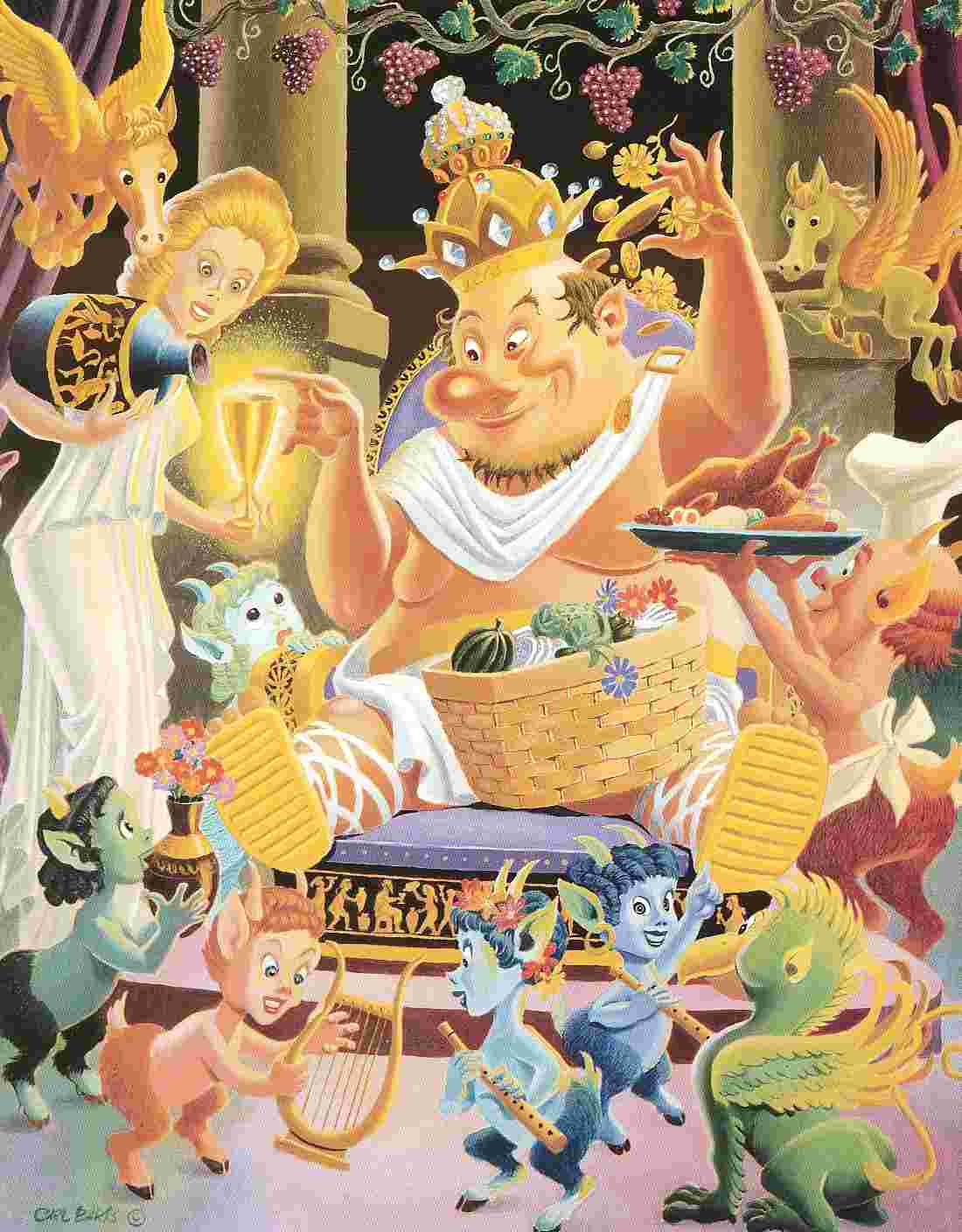 08-76 King Midas having Fun |
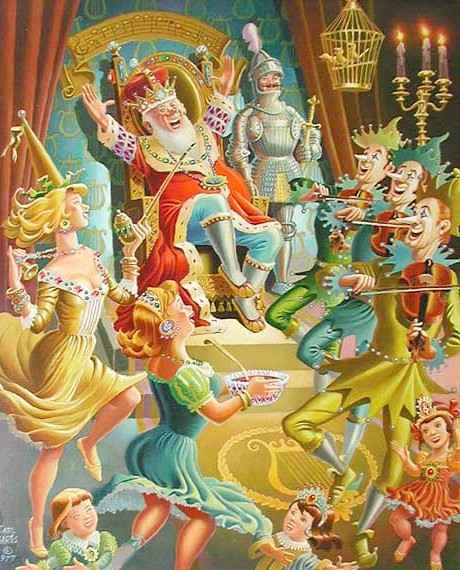 01-77 Old King Cole |
 02-77 King Neptune |
 40-78 King Beowulf (see more HERE) |
 01-80 Xerxes and the Harem |
|
UNPUBLISHED
Barks made several sketches for possible use in his series, but none of them were ever used. The following shows a collection. He also made lists of potential historic persons such as Catherine the Great, Henry the Eighth, Louis the 14th, and Tutankhamon, but they all shared the same fate.
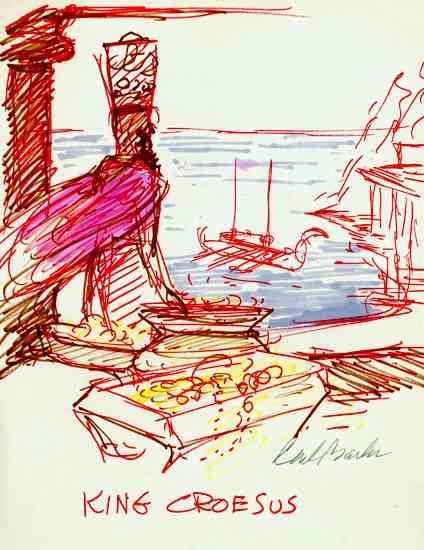 King Croesus Croesus was king of parts of Asia Minor (partly modern Turkey) and known for his great wealth. |
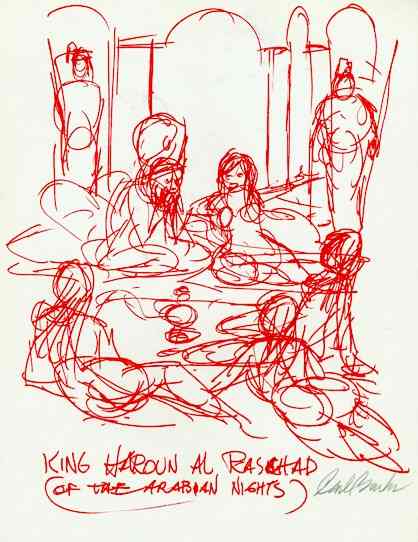 King Haroun al Raschad (Barks misspelled Raschid) Harun Al-Raschid (most common spelling) was an Iraqi Caliph mentioned in the book 1,001 Arabian Nights. |
|||
 Genghis Goose (Initially, Barks wrote Genghis Duck) Genghis Khan (Khan means Emperor or King) was ruler of all the nomadic Mongolian tribes. |
 Barbarian King with his Harem Barks did not specify which king he had in mind, but it seems plausible he was from the Mongolian steppes. |
|||
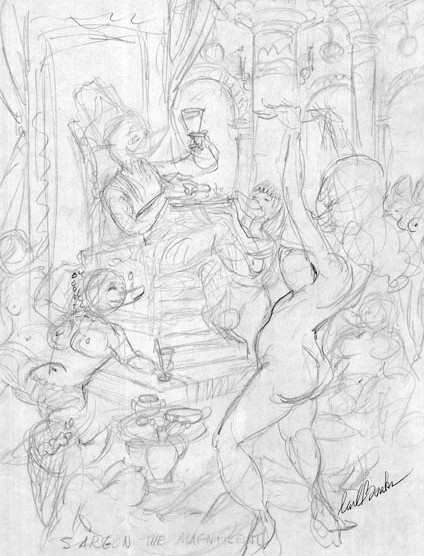 Sargon the Magnificent Sargon of Akkad AKA Sargon the Great was an Akkadian (Mesopotamian) king some 4,300 years ago. |
 Pharoah Ataduck (Barks misspelled Pharaoh) Mustafa Kemal Atatürk was a Turkish President whose popularity was compared to that of an Egyptian Pharaoh. |
|||
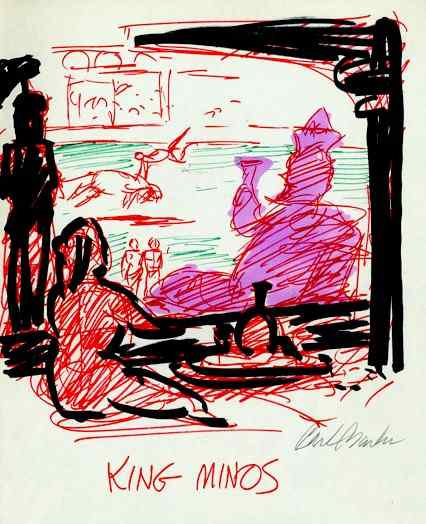 King Minos Minos was King of Crete and son of Zeus and Europa in Greek mythology. Builder of the famous Labyrinth. |
 Assyrian King Barks did not specify which Assyrian (Mesopotamian) king he had in mind. The stiff image was time typical. |
|||
Alexander III,
better known as The Great, was a Macedonian king, who
spent most of his reign conquering many neighbouring and
faraway nations and tribes. Initially, Barks titled him
Alexander the Goose. |
||||
Arthur Pendragon
was a British king who defeated an invading Saxon army.
Still, he is probably best known for his many helpers -
the Knights of the Round Table and the magician Merlin. |
||||
EXTRA A general idea for a children's book had
been rummaging in Barks' mind for some years during the
1970's, but he was unsure of its potential. After having
researched the possibilities he finally closed the
chapter in a letter to a friend in December 1979 by
writing (excerpts): |
| http://www.cbarks.dk/THEABANDONEDPROJECT.htm | Date 2010-10-08 |